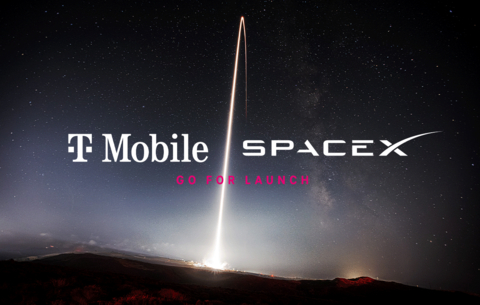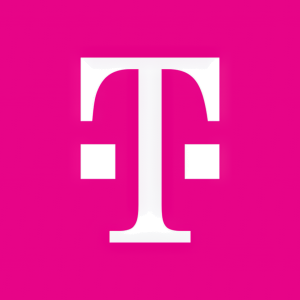First SpaceX Satellites Launch for Breakthrough Direct to Cell Service with T-Mobile
Major step forward in companies’ vision to create truly universal coverage by pairing SpaceX’s Starlink satellite technology with T-Mobile's industry-leading network
Five international partners have joined T-Mobile and SpaceX on their quest for global connectivity

Major step forward in companies’ vision to create truly universal coverage by pairing SpaceX’s Starlink satellite technology with T-Mobile's industry-leading network. Five international partners have joined T-Mobile and SpaceX on their quest for global connectivity (Graphics: Business Wire)
“Our mission is to be the best in the world at connecting customers to their world and today is another step forward in keeping our customers connected even in the most remote locations for added peace of mind when they need it most,” said Mike Katz, President of Marketing, Strategy and Products, T-Mobile. “Today’s launch is a pivotal moment for this groundbreaking alliance with SpaceX and our global partners around the world, as we work to make dead zones a thing of the past.”
With well over half a million square miles of the
Today marks the first of many Starlink satellite launches to come that will include Direct to Cell capabilities. Initially, the service will begin with text messaging, with voice and data coverage to follow in the coming years.
“The launch of these first Direct to Cell satellites is an exciting milestone for SpaceX to demonstrate our technology," said Dr. Sara Spangelo, Sr. Director of Satellite Engineering. "We look forward to rapidly scaling up Direct to Cell with our partner operators around the world and rolling out messaging service for T-Mobile customers!”
T-Mobile and SpaceX’s shared vision is to provide truly universal coverage and last year, they issued an open invitation to wireless providers worldwide to expand globally with reciprocal roaming. As of today, five wireless providers are already onboard to launch Direct to Cell technology including KDDI (
For more details at T-Mobile, head to t-mobile.com/coverage/network.
Some uses may require certain plan or feature; see T-Mobile.com.
Cautionary Statement Regarding Forward-Looking Statements
This communication contains certain forward-looking statements, including T-Mobile’s plans to increase cell phone coverage while utilizing Starlink, and offer such coverage to its customers. Forward-looking information is based on management’s estimates, assumptions and projections, and is subject to significant uncertainties and other factors, many of which are beyond the Company’s control. Important risk factors could cause actual future results and other future events to differ materially from those currently estimated by management, including, but not limited to: the time and costs relating to building out the network.
About T-Mobile US, Inc.
T-Mobile US, Inc. (NASDAQ: TMUS) is America’s supercharged Un-carrier, delivering an advanced 4G LTE and transformative nationwide 5G network that will offer reliable connectivity for all. T-Mobile’s customers benefit from its unmatched combination of value and quality, unwavering obsession with offering them the best possible service experience and undisputable drive for disruption that creates competition and innovation in wireless and beyond. Based in
View source version on businesswire.com: https://www.businesswire.com/news/home/20231214061627/en/
Media Contacts
T-Mobile US, Inc. Media Relations
MediaRelations@t-mobile.com
Investor Relations Contact
T-Mobile US, Inc.
investor.relations@t-mobile.com
https://investor.t-mobile.com
Source: T-Mobile US, Inc.








